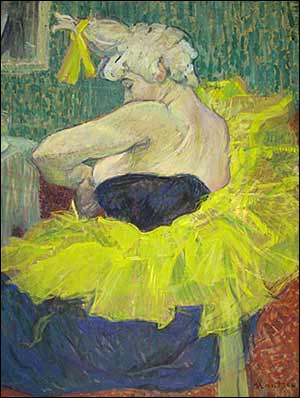Do not believe that this exhibition focuses on the circus in art or even on the history of the circus. Its title was inspired by Jean Starobinski’s book Portrait of the Artist as an acrobat, and it deals with the way artists, at a certain period of time, portrayed themselves through the features of a clown figure. That phenomenon reflected their changing social status and marked the history of modern painting
The artist as a clown
After 1789, the image that artists had of themselves -and that society sent back to them- irretrievably began to change. They ceased to be regarded, and to regard themselves as equal to the Greats of this world and started to envision themselves as marginal beings, as outcasts, buffoons or clowns, and that was precisely the image they projected. Hence an upsurge of interest for the circus, a popular form of entertainment that was developing at the time. Concurrently, the solemn, ceremonial self-portraits of the classical age were superseded by ironic self-portraits in which artists gave their features a caricatured, grimacing twist.
Paintings, sculptures, films and videos
Mondo novo, Parade, Ecce Homo, Portrait of the artist, End Game ,Turbulence and Chaos, Monsters and Marvels, Heavenly Bodies, Harlequin... from XVIII century fairground shows dear to Tiepolo to Picasso's Harlequins, nine sections display some two hundred works – paintings, sculptures, drawings, photographs, installations – covering over two centuries, from Watteau and Chardin to Boltanski and Cindy Sherman, via Goya, Daumier, Courbet, Seurat, Ensor, Rouault, Léger, Klee, or Chagall... And from Marcel Carné’s Les Enfants du paradis to Pierrick Sorin’s Whipped cream tarts, excerpts from old films and contemporary videos, showing the persistency of that theme in today’s art, ponctuate the exhibition, which ends with the movements of Jonathan Borofsky’s clown automaton
This exhibiton is organised by the National Gallery of Canada., and coproduced by the Réunion des musées nationaux for the Paris showing. It will be held at the National Gallery of Canada from 25 June to 19 September 2004.
Publications
Exhibition catalogue, 22 x 28 cm, 368 pages, 240 illustrations of which 200 in colour, € 59, copublished by Gallimard and RMN, distributed by Sodis
Le Petit journal, € 3, RMN
|








